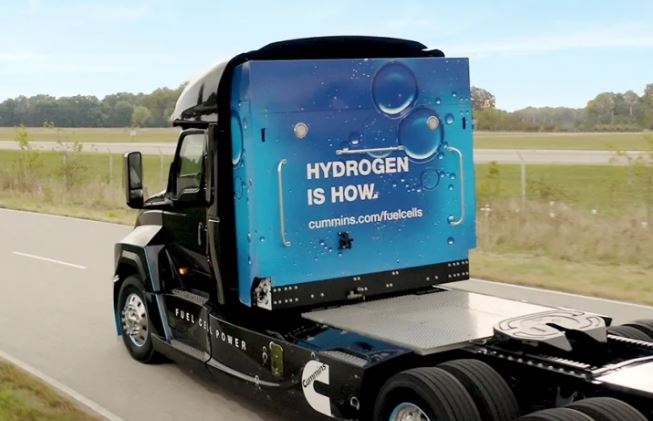Government support needed to eliminate transport emissions: Cummins
The government has a role to play in paving the way to zero-emissions transportation and ensuring the U.S. is a global leader in hydrogen fuel cell technologies.
That was a message Tony Satterthwaite, vice-chairman of Cummins, took to the U.S. Senate’s Energy and Natural Resources hearing March 16.
“The challenges before us require investment and collaboration among public and private entities to ensure the solutions are developed and implemented quickly, effectively and affordably,” Satterthwaite said during his Driving Innovation in Transportation remarks.
In the short term, Satterthwaite said the focus will be on high-efficiency internal combustion engines with mild hybridization and low carbon fuels. He noted Cummins’ current spark-ignited natural gas engines beat EPA targets by 90% in particulate matter and NOx, and 16% when it comes to greenhouse gases (GHG).
“They can achieve sub-zero emissions when using renewable natural gas,” he added. “Natural gas engines are the most mature, proven, and least disruptive alternative power technology available today.”
But for zero tailpipe emissions, Satterthwaite said battery-electric and hydrogen fuel cell-powered vehicles will eventually work in tandem, “with batteries well suited for light-duty, last-mile delivery and urban applications and hydrogen fuel cells as a power-dense option for applications like longhaul trucking.”
However, funding will be needed for the infrastructure required to support those vehicles.
“If the U.S. is to achieve this path to zero in a way that is cost-effective, timely and promotes U.S. jobs and manufacturing, significant public support is needed from DOE (Department of Energy), our national labs and other research institutions to innovate in infrastructure, development and deployment,” Satterthwaite said.
He noted Europe and East Asia have an early lead in hydrogen infrastructure development and fuel cell equipment deployment.

“Congress can increase the U.S.’ international competitiveness by calling for a U.S. national hydrogen strategy to coordinate needed innovation, investment and activities throughout the government and private sector,” Satterthwaite said.
He called on government to launch pilot programs to develop low-cost hydrogen in strategic areas.
“By developing these regional hydrogen hubs, the U.S. can demonstrate the capability and leverage scale to achieve a cost parity with traditional technologies,” he said. “Further public investment is also needed in the areas of larger scale electrolyzer plants for decarbonized hydrogen production, and hydrogen fuel cell fleet management.”
He also said research is needed to reduce the precious metals and expensive materials in electrolyzer stacks and fuel cell systems for heavy trucks. Satterthwaite cited the SuperTruck partnership with the U.S. Department of Energy as an example of a public-private research partnership that delivered results.
He said the technologies developed under the SuperTruck 1 initiative reduced CO2 emissions by 33% from the 2009 baseline, while SuperTruck 2 demonstrated a further 50% reduction.
“However, industry working alone will not get us where we need to be in a timeframe that is feasible,” Satterthwaite concluded. “Government supported innovation is needed to meet our global energy and environmental challenges.”
Have your say
This is a moderated forum. Comments will no longer be published unless they are accompanied by a first and last name and a verifiable email address. (Today's Trucking will not publish or share the email address.) Profane language and content deemed to be libelous, racist, or threatening in nature will not be published under any circumstances.
Gov assistance with the cost of electrical plugs with parking and hydrogen storage and pumps is the best use of scarce gov dollars.